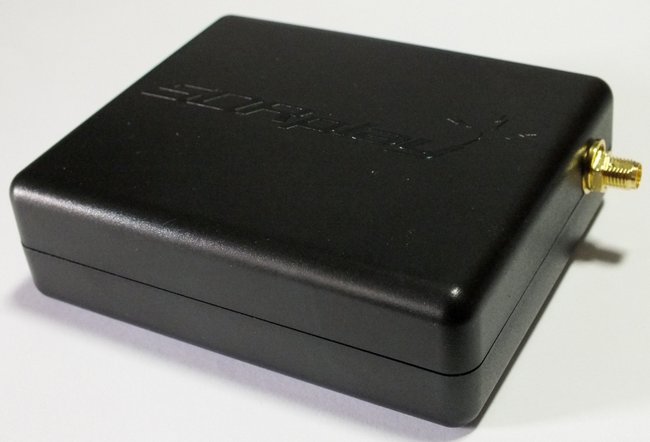(Source: SDRplay Press Release via Jon Hudson)
SDRplay are pleased to announce a price reduction for their entry-level SDR receiver, the RSP1 to $99.95 USD making it the most competitive mid-range SDR to include reception down to low frequencies without the need for an upconverter.
The RSP1 provides general coverage receiver and panadapter capability from 10 kHz to 2 GHz. As well as providing SDRuno SDR software, support for popular 3rd party packages like HDSDR, SDR-Console and Cubic SDR is provided. Recent availability of an SD Card image makes for easy set up on a Raspberry Pi.


My RSP-1 lived about 15 minutes but it was long enough to check
out LW.
It performed like most SW portables do on LW.
There was MW-AM feedthru which was fixed by the Par
Lowpass filter.
Sensitivity was also like a SW portable…you would be advised
to run a VLF converter like the Jackson Harbor Press 14 buck
kit* ahead of it to avoid the problems above…like any other
receiver.
Always thought SDR receivers were super-duper and expected
spectacular results from the reviews…not so much.
* http://www.wb9kzy.com/lfconv.htm
Anyone know how well this SDR works on the LF band, specifically, the radio beacon band? My experience with the dongle-type SDRs with an up-converter is that they are not very sensitive on longwave, even with a 43 foot vertical with many radials. They seem to perform very well down to the AM broadcast band but not below that.
One other thing to consider is if the RSP1 works with SDR#, HDSDR, and/or SDR Console; the dongle-type SDRs do.
But admittedly the lower price makes it a tempting purchase.
“Not very sensitive” might be a problem of impedance matching: A 43 foot vertical is very short for LF and therefore quite high-impedance. You get a voltage divider consisting of the antenna capaity against ist surroundings and the cable capacity.
Try an active receiving antenna with good LF sensitiviy. Its amplifier provides a low-impedance source. That antenna is much smaller than your vertical so you can place it in the corner of your garden with the lowest RFI, perhaps high up on a tree.
I’m an LF listener and the RSP works very well below 500 KHz. However, it is wise to use a low-pass filter or you tend to get AM BC stations popping up! Once you have a suitable filter it works extremely well. I use a Wellbrook loop antenna, much better than a longwire for keeping local noise down.
A lowpath filter is the minimum. Get one with a cut-off frequency at around 500 kHz and another with 120 kHz or so.
Perhaps you should even consider a variable preselector: A parallel resonant circuit consisting of several high-Q inductors and a variable capacitor. Couple your antenna loosely to this resonator. If you feel you need amplification connect a FET like the J310 as a source follower to the top or a tap of the resonant circuit.
Here in cental Europe there are quite strong signals below 300 kHz. The broadcast stations will shut down over the next years. But other transmitters will continue like the RTTY stations of the weather service and time signals.
We also have remote control transmitters, within 200 Hz on either side of the LF ham radio band, that have good antennas and a few 10 kW of transmitter power. If you wish to receive radio amateurs that are limited to 1 W EIRP or so, you need all the selectivity you can get.
Some time ago I did a side-by-side comparison of the RSP1 and a RTL-SDR (DX Patrol Mk3). For the German readers: RTL-SDR und Mirics – Zwei einfache SDR-Konzepte im Vergleich. In: cqDL 3/16, S. 28ff
The RSP1 won hands-down: at least 12 dB more dynamic range, much better frequency stability, much better frequency calibration.
At $ 100 for the RSP1 I see absolutely no point in buying a RTL-SDR with an up-converter for shortwave.
On Ebay you find RTL-SDRs with baseband access (“direct Q channel sampling”) in the $ 20 range. These still have their place in the entry market. Without the tuner chip the frequency stability is much better. But I have not tested such a device.